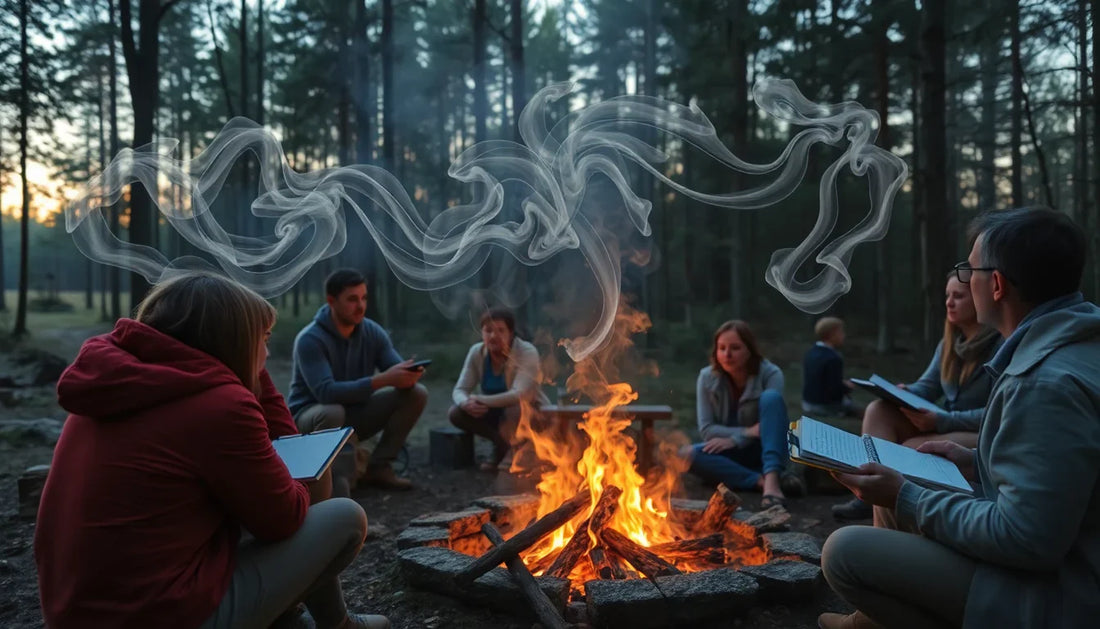
The Science of Campfire Smoke: Why It Follows You (and How to Avoid It)
Share
As the sun dips below the horizon, the crackle of a campfire fills the air, casting a warm glow over the serene wilderness. But as you settle in to enjoy the mesmerizing flames, you may find yourself constantly shifting, trying to evade the persistent plume of smoke that seems to follow your every move. This curious behavior of campfire smoke has long puzzled outdoor enthusiasts, but the science behind it is both fascinating and practical.
Understanding Campfire Smoke Dynamics
To unravel the mystery of smoke's elusive movements, we must first delve into the physics behind it. Smoke is composed of tiny particulates and gases, each with their own unique properties. As the fire burns, these elements are released into the air, creating a visible plume that is carried by the surrounding currents.
The direction and behavior of the smoke are influenced by a variety of factors, including wind patterns, air temperature, and the shape of the surrounding terrain. Warm air, for example, tends to rise, creating an upward draft that can pull the smoke skyward. Conversely, cooler air near the ground can cause the smoke to hug the surface, making it more difficult to avoid.
Why Smoke Seems to Follow You
One of the most perplexing aspects of campfire smoke is its uncanny ability to track your movements, no matter how you try to evade it. This phenomenon is largely due to the complex interplay of air currents and thermal dynamics.
As you move around the fire, your body and the heat it generates can create small-scale air currents that influence the smoke's trajectory. The warm air rising from your body can actually draw the smoke in your direction, creating the illusion that the smoke is "following" you.
Additionally, the shape and position of the fire itself can affect the smoke's behavior. If the fire is not properly positioned or the fuel is not arranged correctly, the smoke may be directed in unpredictable ways, making it challenging to find a smoke-free spot.
Health Implications of Campfire Smoke
While the dance of campfire smoke may be a captivating sight, it's important to be mindful of the potential health risks associated with prolonged exposure. Smoke contains a variety of particulates and chemicals that can be harmful if inhaled, particularly for individuals with respiratory conditions or allergies.
Prolonged exposure to campfire smoke has been linked to a range of health issues, including eye irritation, respiratory problems, and even increased risk of cardiovascular disease. By understanding the science behind smoke behavior, campers can make informed decisions to minimize their exposure and protect their well-being.
Practical Tips to Minimize Smoke Exposure
Fortunately, there are several strategies that outdoor enthusiasts can employ to reduce their exposure to campfire smoke and enjoy a more comfortable camping experience.
One of the most important factors is the type of firewood used. Hardwoods, such as oak or maple, tend to produce less smoke than softwoods like pine or fir. Additionally, properly seasoned and dry wood will burn more efficiently, reducing the amount of smoke generated.
The placement and construction of the fire itself also play a crucial role. Positioning the fire in an area with good air flow, and arranging the fuel in a way that promotes efficient combustion, can help to minimize smoke production and direct it away from the seating area.
Advanced Strategies for Smoke Reduction
For those seeking even greater control over campfire smoke, there are more advanced techniques and equipment that can be employed.
Wind-blocking methods, such as strategically placed tarps or windscreens, can help to redirect the smoke and create a more sheltered seating area. Additionally, modern camping gear, like smokeless fire pits or portable smoke-reducing devices, can offer a more sophisticated solution to the smoke problem.
By combining these practical and advanced strategies, campers can enjoy the warmth and ambiance of a campfire while minimizing the discomfort and health risks associated with smoke exposure.
Conclusion
The science behind campfire smoke may seem like a minor detail, but understanding its behavior can greatly enhance the overall camping experience. By recognizing the factors that influence smoke movement and employing effective smoke-reduction techniques, outdoor enthusiasts can reclaim their rightful place around the fire, free from the persistent plume that once followed their every step.
With this knowledge in hand, campers can focus on the true essence of the outdoor experience – connecting with nature, sharing stories, and basking in the mesmerizing glow of the flames, unencumbered by the smoke that once seemed to have a mind of its own.
